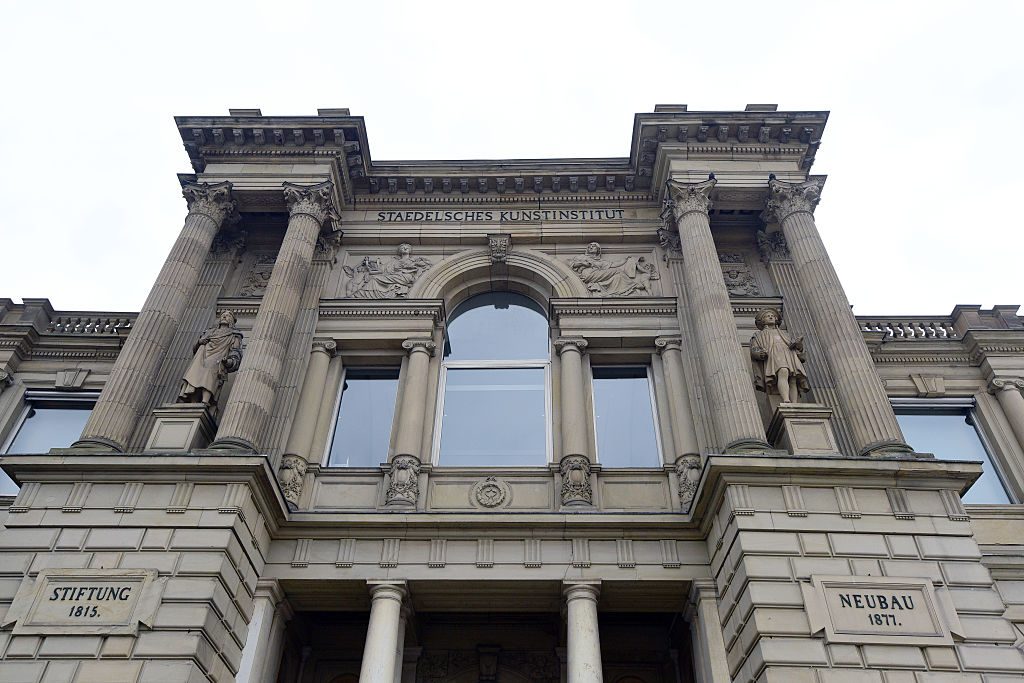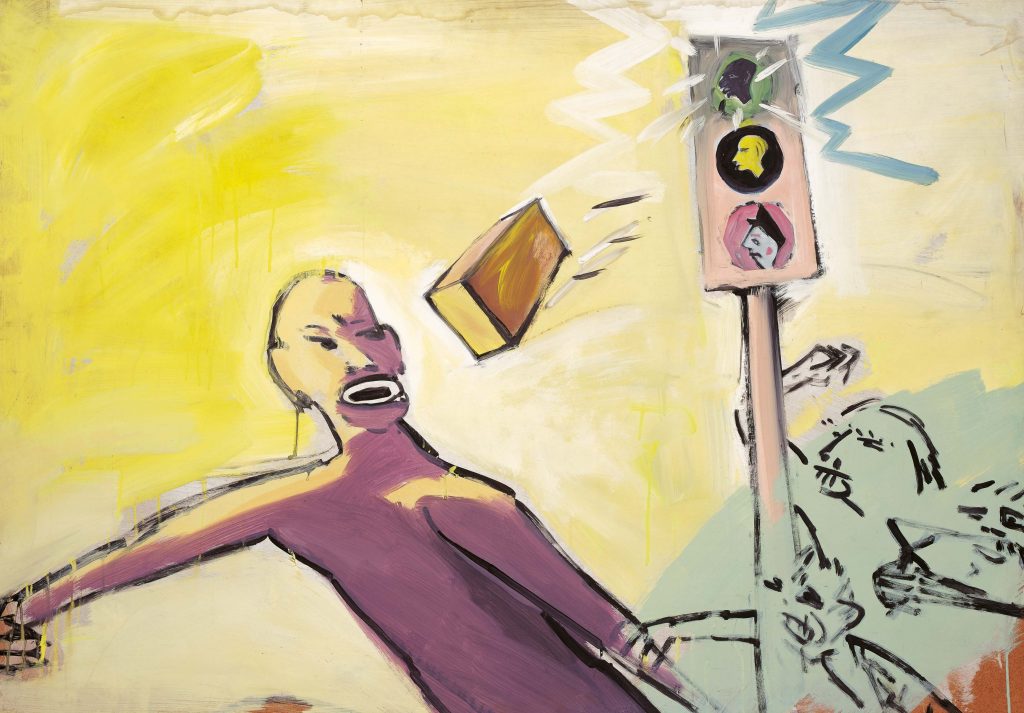On View
Despite Outcry, Germany’s Städel Museum Stands by Its Choice to Hang a Graphic Painting Depicting Racist Violence
A petition calling for the work's removal is gaining steam.

A petition calling for the work's removal is gaining steam.

Kate Brown

It is a shocking and unforgettable image: a Black man crosses the street with an angry mob in pursuit. A brick flies through the air toward the man’s head. The traffic light is green, as if the angry mob has the go-ahead.
Activists are petitioning the Städel Museum in Frankfurt am Main to take down this painting, which is on view now at the museum. Detractors say the work, called Der Ziegeln**** (translated, The Brick N******), is overtly racist both in content and in title. The 1981 painting, by 72-year-old German painter Georg Herold, was acquired by the museum as a gift from a private collector in 2015.
A petition calling for the work’s removal, which Artnet News understands was started by 20 students from the neighboring art school, Städelschule, had garnered more than 750 signatures by publication time.
The work has been on view at the Städel in a group exhibition of recent acquisitions titled “Back to the Present” since May 19. Herold’s painting hangs in a small section of the show dedicated to his mostly male provocateur cohort, the “Junge Wilde.” The group, which rose to prominence in 1980s West Germany, included Albert Oehlen, Martin Kippenberger, and Werner Büttner and was known for breaking rules and playing with taboos.
It is not only the painting, but also the wall text accompanying it, that has sparked debate in the German art world. In the wall text, the museum describes the work as a “tasteless provocation” that “deliberately displays political incorrectness.” Those opposed to the painting’s display say that racism should never be condoned as art, even in the guise of humor, conceptualism, or aesthetic experimentation. Others have defended the museum’s choice to hang the work, while some maintain the painting, at the very least, needs better context.
“Ziegeln**** is not simply a ‘tasteless provocation’; it makes light of racialized violence that continues to be the reality for Black communities in Germany now, when the Black Frankfurt community is busy on the streets demanding justice for the cases of Oury Jalloh, Rooble Warsame, William Tonou-Mbobda, and countless others who died as a result of racist violence in Germany and around the globe,” the petition states. “Why do you feel that the most relevant action you can come up with in this moment is to ask whether or not your collection is racist? It is.”

Georg Herold Ziegeln**** (1981). Städel Museum, Frankfurt am Main. © VG Bild-Kunst, Bonn 2020
The painting went on view about two weeks before the murder of George Floyd in Minneapolis sparked protests in support of police reform and racial justice around the globe. In Berlin last week, authorities decided to change the name of an inner-city train station from its long-held name Mohrenstrasse (the word “Mohr” is a derogatory term for a person of color) to Glinkastrasse. With over 10,000 demonstrating at Berlin’s Alexanderplatz for Black Lives Matter in May, there has been a surge in mainstream awareness of Germany’s own colonial history and the ongoing systemic racism in its institutions.
Though the Junge Wilde artists are known as equal opportunity provocateurs, the museum contends that the work’s intent is “explicitly anti-racist.”
“[Herold’s] aesthetic strategy is an invitation to the viewer to position himself, to think, to turn against what is seen/presented,” the museum said in a statement. “[It is] a political painting, consciously without wanting to be activist, that holds up the mirror to society.”
Artnet News contacted Georg Herold’s gallery to seek comment and learn more about the intention behind the work, but did not hear back by publishing time. “The work of art is not easy, and it hurts to look at,” the museum said.